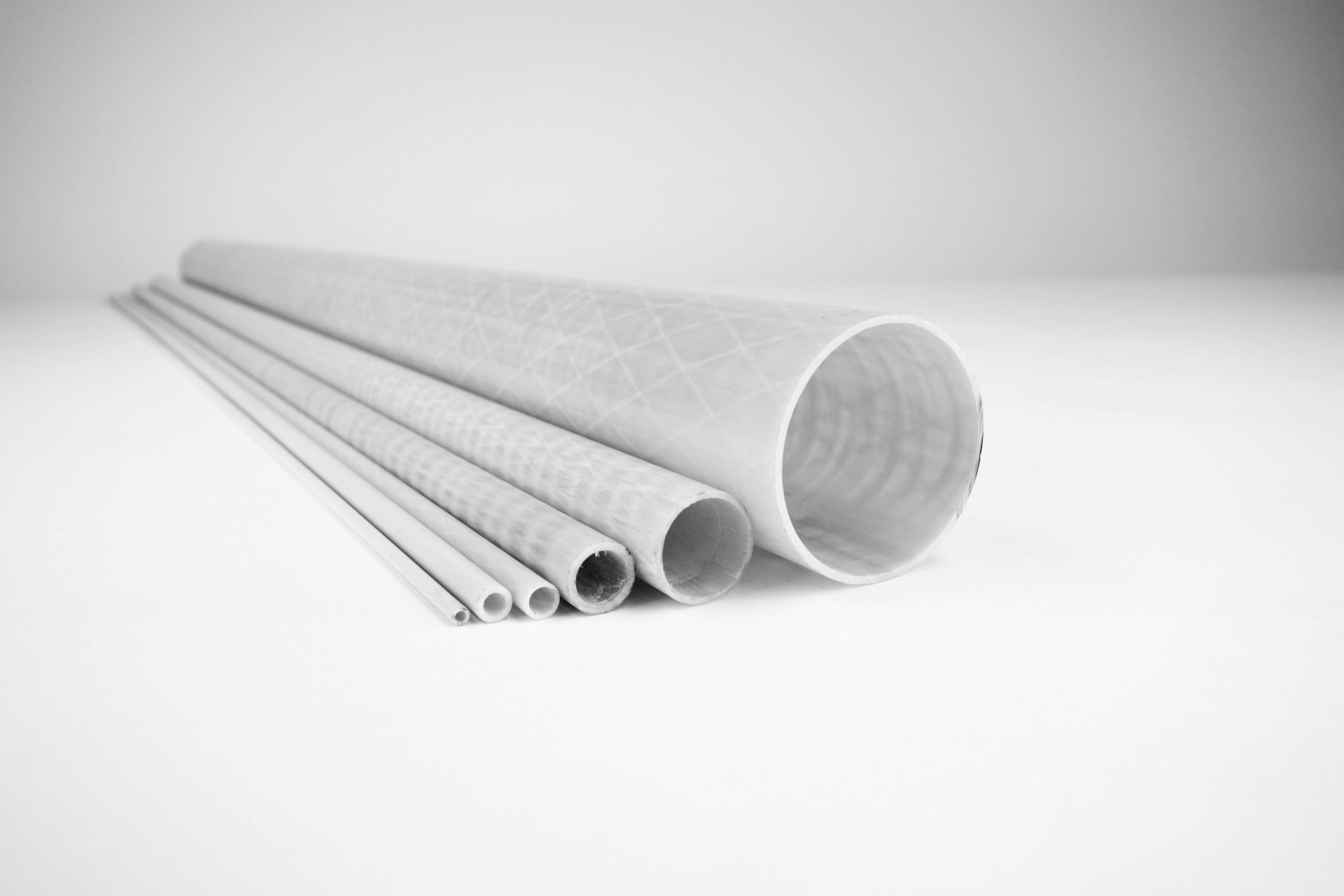
Filter
–
Glass Fiber Tube pultruded Ø 4mm x ø 2.5mm
From
€3.78*
Pultruded glass fiber tubes – manufactured using the pultrusion process, have an unidirectional fiber orientation in the longitudinal direction. Both E-Glass and S-Glass fibers with a fiber volume of approx. 65% are used.In the case of larger diameters, additional fibers are braided as core or cover layers using the pull-winding process. This also improves pressure stability and torsional rigidity.
Glass Fiber Tube pultruded Ø 5mm x ø 3mm
From
€3.97*
Pultruded glass fiber tubes – manufactured using the pultrusion process, have an unidirectional fiber orientation in the longitudinal direction. Both E-Glass and S-Glass fibers with a fiber volume of approx. 65% are used.In the case of larger diameters, additional fibers are braided as core or cover layers using the pull-winding process. This also improves pressure stability and torsional rigidity.
Glass Fiber Tube pultruded Ø 6mm x ø 4mm
From
€3.88*
Pultruded glass fiber tubes – manufactured using the pultrusion process, have an unidirectional fiber orientation in the longitudinal direction. Both E-Glass and S-Glass fibers with a fiber volume of approx. 65% are used.In the case of larger diameters, additional fibers are braided as core or cover layers using the pull-winding process. This also improves pressure stability and torsional rigidity.
Glass Fiber Tube pultruded Ø 8mm x ø 6mm
From
€3.88*
Pultruded glass fiber tubes – manufactured using the pultrusion process, have an unidirectional fiber orientation in the longitudinal direction. Both E-Glass and S-Glass fibers with a fiber volume of approx. 65% are used.In the case of larger diameters, additional fibers are braided as core or cover layers using the pull-winding process. This also improves pressure stability and torsional rigidity.
Glass Fiber Tube pultruded Ø 10mm x ø 8mm
From
€4.08*
Pultruded glass fiber tubes – manufactured using the pultrusion process, have an unidirectional fiber orientation in the longitudinal direction. Both E-Glass and S-Glass fibers with a fiber volume of approx. 65% are used.In the case of larger diameters, additional fibers are braided as core or cover layers using the pull-winding process. This also improves pressure stability and torsional rigidity.
Glass Fiber Tube pultruded Ø 12mm x ø 10mm
From
€4.37*
Pultruded glass fiber tubes – manufactured using the pultrusion process, have an unidirectional fiber orientation in the longitudinal direction. Both E-Glass and S-Glass fibers with a fiber volume of approx. 65% are used.In the case of larger diameters, additional fibers are braided as core or cover layers using the pull-winding process. This also improves pressure stability and torsional rigidity.
Glass Fiber Tube pultruded Ø 14mm x ø 12mm
From
€4.56*
Pultruded glass fiber tubes – manufactured using the pultrusion process, have an unidirectional fiber orientation in the longitudinal direction. Both E-Glass and S-Glass fibers with a fiber volume of approx. 65% are used.In the case of larger diameters, additional fibers are braided as core or cover layers using the pull-winding process. This also improves pressure stability and torsional rigidity.
Glass Fiber Tube pultruded Ø 16mm x ø 12mm
From
€9.26*
Length:
1 m
Pultruded glass fiber tubes – manufactured using the pultrusion process, have an unidirectional fiber orientation in the longitudinal direction. Both E-Glass and S-Glass fibers with a fiber volume of approx. 65% are used.In the case of larger diameters, additional fibers are braided as core or cover layers using the pull-winding process. This also improves pressure stability and torsional rigidity.
Glass Fiber Tube pultruded Ø 20mm x ø 17mm
From
€11.12*
Pultruded glass fiber tubes – manufactured using the pultrusion process, have an unidirectional fiber orientation in the longitudinal direction. Both E-Glass and S-Glass fibers with a fiber volume of approx. 65% are used.In the case of larger diameters, additional fibers are braided as core or cover layers using the pull-winding process. This also improves pressure stability and torsional rigidity.
Glass Fiber Tube pultruded Ø 30mm x ø 27mm
From
€15.50*
Pultruded glass fiber tubes – manufactured using the pultrusion process, have an unidirectional fiber orientation in the longitudinal direction. Both E-Glass and S-Glass fibers with a fiber volume of approx. 65% are used.In the case of larger diameters, additional fibers are braided as core or cover layers using the pull-winding process. This also improves pressure stability and torsional rigidity.
Glass Fiber Tube pultruded Ø 38mm x ø 34mm
From
€19.07*
Pultruded glass fiber tubes – manufactured using the pultrusion process, have an unidirectional fiber orientation in the longitudinal direction. Both E-Glass and S-Glass fibers with a fiber volume of approx. 65% are used.In the case of larger diameters, additional fibers are braided as core or cover layers using the pull-winding process. This also improves pressure stability and torsional rigidity.
Glass Fiber Tube pultruded Ø 50mm x ø 46mm
From
€22.57*
Pultruded glass fiber tubes – manufactured using the pultrusion process, have an unidirectional fiber orientation in the longitudinal direction. Both E-Glass and S-Glass fibers with a fiber volume of approx. 65% are used.In the case of larger diameters, additional fibers are braided as core or cover layers using the pull-winding process. This also improves pressure stability and torsional rigidity.
Glass Fiber Tube pultruded Ø 60mm x ø 56mm
From
€25.04*
Pultruded glass fiber tubes – manufactured using the pultrusion process, have an unidirectional fiber orientation in the longitudinal direction. Both E-Glass and S-Glass fibers with a fiber volume of approx. 65% are used.In the case of larger diameters, additional fibers are braided as core or cover layers using the pull-winding process. This also improves pressure stability and torsional rigidity.
Glass Fiber Tube pultruded Ø 80mm x ø 76mm
From
€27.32*
Pultruded glass fiber tubes – manufactured using the pultrusion process, have an unidirectional fiber orientation in the longitudinal direction. Both E-Glass and S-Glass fibers with a fiber volume of approx. 65% are used.In the case of larger diameters, additional fibers are braided as core or cover layers using the pull-winding process. This also improves pressure stability and torsional rigidity.

